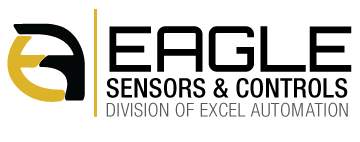Ultraviolet Sensing

UV sensing is an interesting subset of photoelectric sensing, but with some significant distinctions. The UV sensor’s LED source emits light in the invisible UV spectrum. If the natural or engineered properties of the target material, in-turn, fluoresce in the visible spectrum when interrogated by a UV source, then the sensor sees this shift of UV to the visible spectrum as the target present. The sensor only responds to that UV shifted to the visible spectrum, so highly reflective targets that merely reflect visible or UV light, are totally ignored. One of observed benefits of proximity mode UV sensors is that UV appears to be significantly more tolerant of incident angle to the target, facilitating applications where space may be constrained, and the approach to the target is non-perpendicular.
The natural UV fluorescing materials include, as an example, some cooking oils or food grease. The engineered UV fluorescing materials are the commercially available UV fluorescing agents, that can be mixed into the target coloring dyes, painted on, or sprayed onto a substrate to give it UV fluorescing properties. The higher the concentration of UV fluorescing agent, the easier for the sensor to discriminate versus other existing UV fluorescing properties. Most white paper stock, and some printed graphics, or materials used in plastic containers already fluoresce to some degree when interrogated by a UV sensor. Therefore, higher concentrations of UV fluorescing agents can be applied to that same substate to distinguish the intentional UV that was applied, versus the existing UV fluorescing properties. Examples of products that often incorporate UV fluorescing agents so that they can be reliably sensed as present, are adhesives and tamper-evident seals. Without these products being present, the end produce may malfunction, and consequences are costly to the manufacturer.
A significant benefit of UV fluorescing agents is that they can be clear when applied, and invisible to the human eye. For example, UV Registration/Eye Marks are often totally invisible, but the UV sensor can easily detect them. This allows marking products in a manner that is aesthetically favored.
The primary disadvantage of adding a UV agent to an existing substrate is the additional process step to apply it, cost of the UV fluorescing agent, if the UV fluorescing agent is compatible/safe with the material on which it was applied, or will the UV fluorescing additive mixed into the product, alter the product’s performance, e.g. paints or wood stains. Application directly onto some products may need to address if it alters that product’s surface finish.
